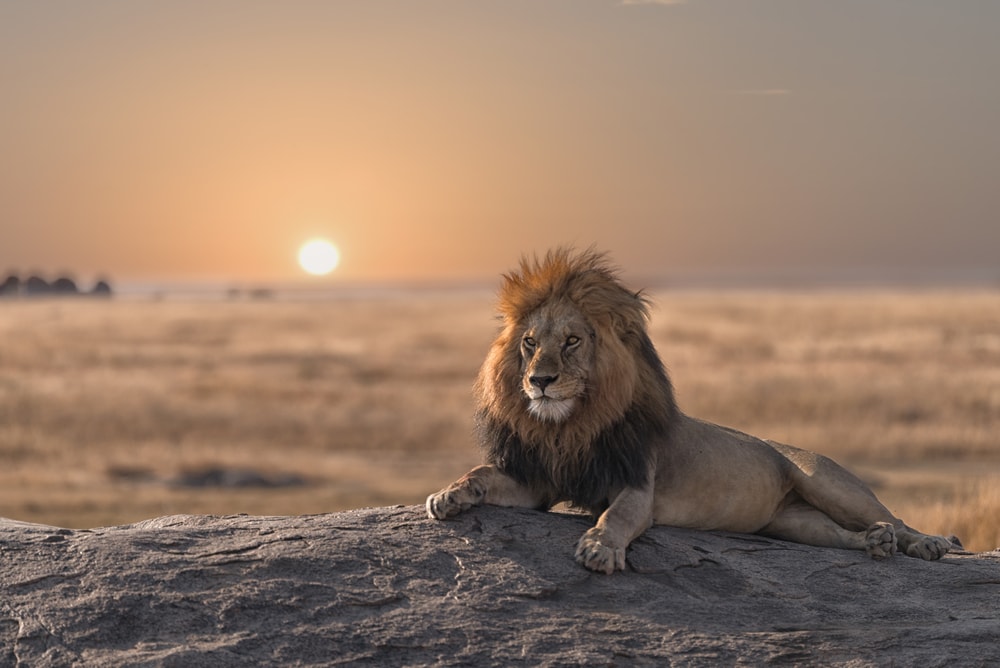
There are few animals more majestic than a big cat. Whether it’s a lion strolling across the savanna, a jaguar crawling through the trees of the rainforest, or a snow leopard stalking its prey in the alpine, big cats are some of the most amazing creatures on the planet.
But, just how many types of big cats are there, you might ask?
It turns out there are 7 types of big cats that currently live on our planet Earth, each of which boasts its own unique adaptations and fascinating physical prowesses through different subspecies.
Up next, we’ll introduce you to the 7 types of big cats and all of the various big cat subspecies. That way, you can become a feline extraordinaire!
What Is A Big Cat?
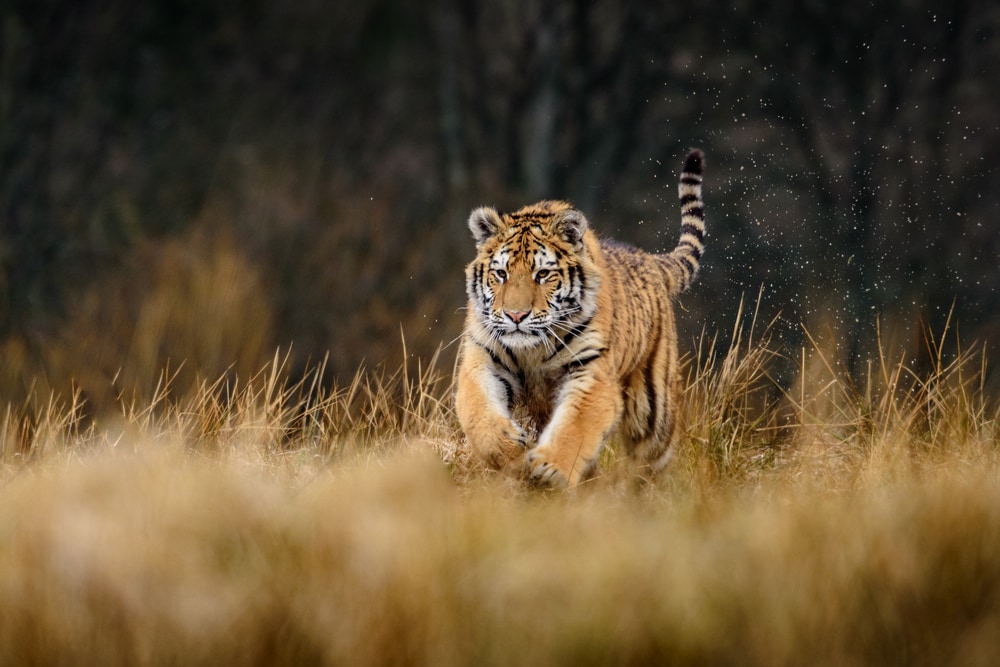
To kick things off, let’s talk a little bit about what a big cat is, anyway. While the definition of a big cat might seem obvious (it’s just a cat that’s big, right?), there’s actually more to big cats than meets the eye.
What’s more, there’s a bit of debate among biologists about what classifies as a big cat, which only makes it easier for people to get a little confused about these amazing creatures. That’s because “big cat” isn’t actually a scientific term; rather, it’s a colloquial term for certain types of large cats.
So, what is a big cat?
Well, in the narrowest sense, big cats are any member of the genus Panthera, which currently includes five living species—lions, tigers, leopards, jaguars, and snow leopards. However, some people will say that big cats need to be able to roar, which would exclude the snow leopard from this list.
Additionally, many people will include cheetahs and cougars (mountain lions) in the definition of “big cat,” even though they’re not in the genus Panthera (they’re in the genera Acinonyx and Puma, respectively). This definition does make sense in many ways since cheetahs and cougars are both very large cats.
However, some organizations, including the Convention on International Trade in Endangered Species of Wild Fauna and Flora (CITES) and National Geographic, define “big cat” as including the 7 species we listed above, plus the clouded leopard and the Sunda clouded leopard.
But, these species are quite small in size, compared to the other 7 cats that we mentioned. As a result, most organizations—including us—don’t count them as “official” big cats.
Therefore, in this article, we define big cats as the 7 largest cats that roam our planet. So, without further ado, here’s a look at the 7 amazing types of big cats that you can find on Earth.
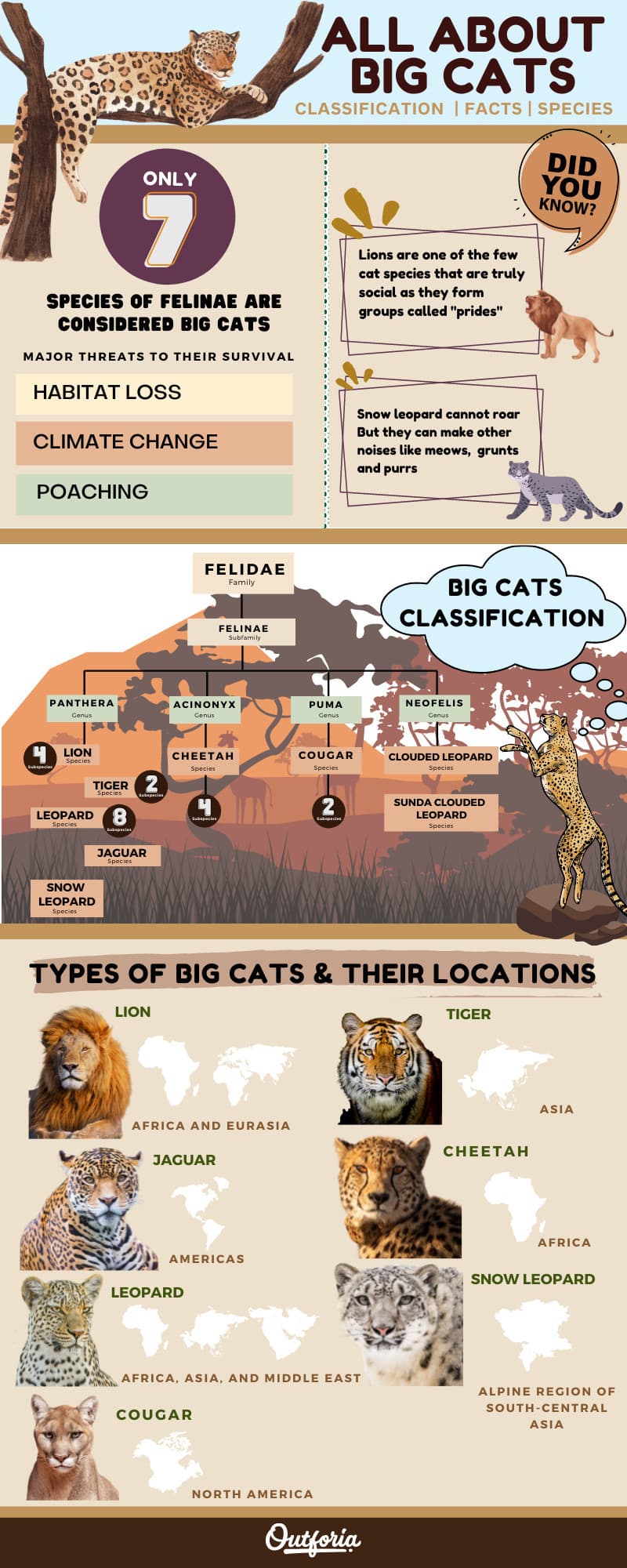
Share This Image On Your Site
<a href="https://outforia.com/types-of-big-cats/"><img style="width:100%;" src="https://outforia.com/wp-content/uploads/2021/06/Infographic-Types-of-Big-Cats.jpg"></a><br> Types of big cats Infographic by <a href="https://outforia.com">Outforia</a>The 7 Ferocious Types of Big Cats
As we’ve mentioned, we define “big cats” as the 5 species in the genus Panthera, as well as the cheetah and the cougar. So, here are the 7 types of big cats, plus all of their living subspecies:
1. Lion (Panthera leo)
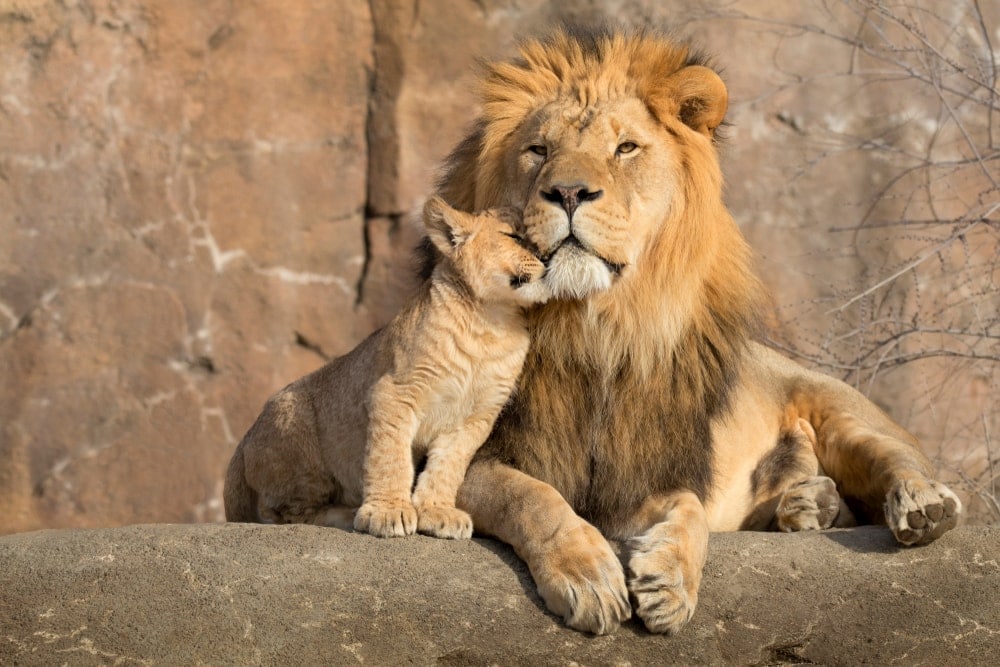
First up on our list of the different types of big cats is the lion, which includes all members of the species Panthera leo.
Nowadays, they live almost exclusively in Africa, though a small population of lions does live in the area of Gir National Park in the Indian state of Gujarat. Historically, lions also lived throughout parts of Eurasia.
Lions are one of the most distinctive big cat species due to the male lion’s iconic hairy mane. They are also one of the few cat species that are truly social as lions form groups called prides.
Within human society, lions have long been an important cultural symbol. Lions are often featured in stories and proverbs and they have frequently been used as symbols of nobility and royalty.
These days, there are two recognized living subspecies of lions: Panthera leo leo and Panthera leo melanochaita. Let’s take a quick look at what makes each subspecies unique.
1.1 Panthera leo leo
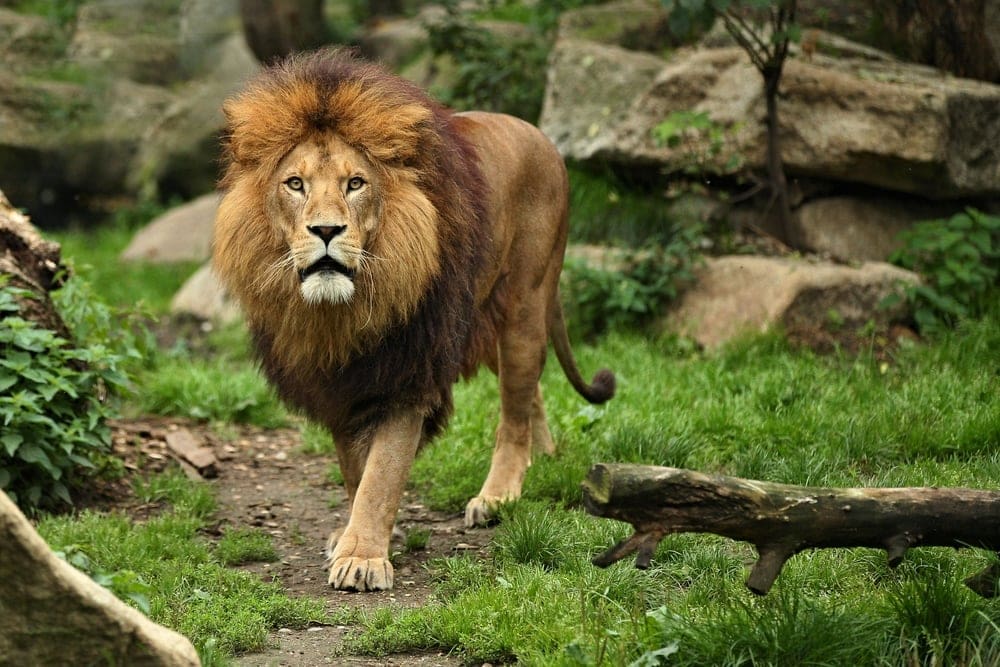
Panthera leo leo is a lion subspecies that’s found primarily in West Africa, the northern part of Central Africa, and in an isolated population within India. While the subspecies did once live in southern Europe, North Africa, and West Asia, it is regionally extinct in those areas.
It is fairly difficult to tell the Panthera leo leo lion subspecies apart from that of the Panthera leo melanochaita subspecies just from visual clues. However, the subspecies are found in different regions, which makes identification from geographic clues fairly straightforward.
1.2 South African Lion (Panthera leo melanochaita)
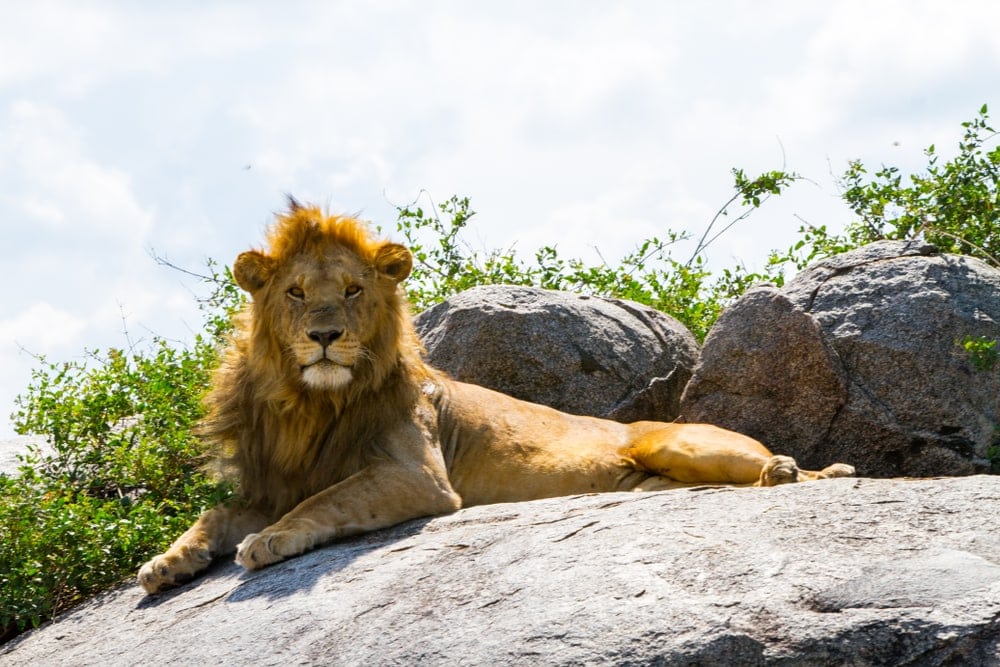
Sometimes called the Southern African lion, Panthera leo melanochaita is a subspecies of lion found in parts of East and Southern Africa. It can be found throughout this region, but it is regionally extinct in Eritrea, Djibouti, and Lesotho.
It was originally believed that members of the subspecies Panthera leo melanochaita had black manes. However, it is now known that male lion mane color is not enough to determine a species as the color of a lion’s mane tends to change with age and genetics.
That being said, there are some individuals in this subspecies that are fully white in color. These lions are not albino, but rather a rare white color morph that is caused by a recessive trait called leucism. Leucism is also responsible for the rare white tiger color morph and the unusual white coloration of many animal species.
2. Tiger (Panthera tigris)

One of the most recognizable cats in the world, the tiger refers to all members of the species Panthera tigris. Tigers are the world’s largest living cat species and they are known for their distinctive orange to brownish fur and dark black stripes.
Tigers once lived throughout much of southern and eastern Asia, including in the Russian Far East and as far west as Turkey.
These days, they are a listed endangered species that is found primarily on the Indian subcontinent, parts of the Himalaya, in Laos, Vietnam, Cambodia, Thailand, Myanmar, China, and Indonesia. They also live in the Russian Far East and it is believed that they may live in parts of North Korea.
There are currently two recognized subspecies of tigers that go by many common names. Here’s what you need to know:
2.1 Panthera tigris tigris
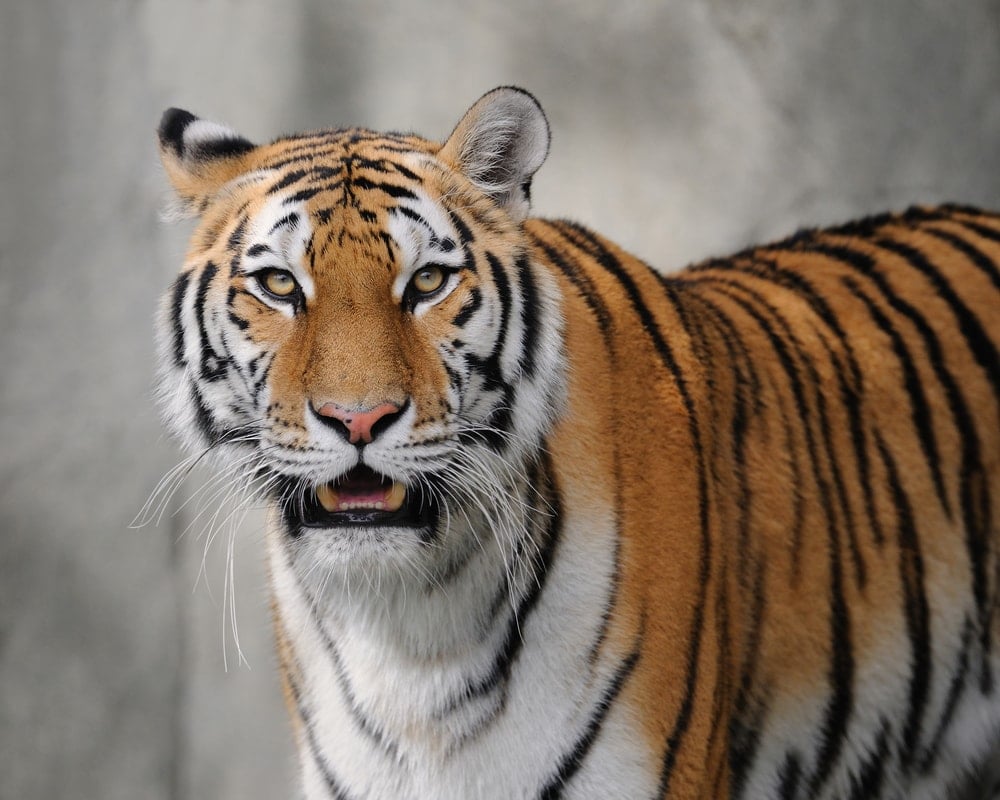
Panthera tigris tigris is a subspecies of tiger that’s found primarily throughout mainland Asia. It includes a number of named populations, such as the Bengal tiger, the South China tiger, the Indochinese tiger, the Malayan, tiger, and the Siberian tiger.
Out of all of these populations, the Bengal tiger is arguably the largest with some individuals reaching a total weight of 717 lbs (325 kg). Indeed, adult male Bengal tigers in parts of Nepal and India have been known to consistently weigh more than 500 lbs (227 kg), making them substantially larger than many other tiger populations, except the Siberian tiger.
2.2 Sunda Island Tiger (Panthera tigris sondaica)

Panthera tigris sondaica, or the Sunda Island tiger, is a subspecies of the tiger that lives in Indonesia. This tiger subspecies includes the Javan tiger, Bali tiger, and Sumatran tiger populations, however, both the Javan and Bali populations are extinct.
The Sumatran tiger was once thought to be a distinct subspecies, but it has since been reclassified with the other members of the Panthera tigris sondaica subspecies. It is listed as critically endangered as there are believed to be around 600 individuals left, all of which are divided up into fragmented subpopulations on Sumatra.
3. Jaguar (Panthera onca)
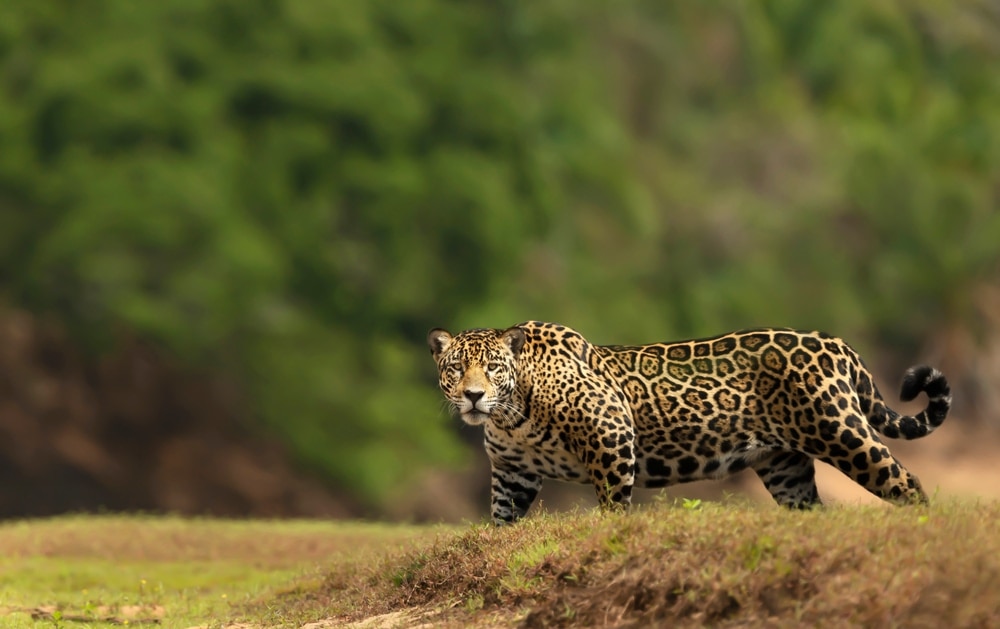
One of only two widely recognized big cat species not to have any subspecies, the jaguar includes all members of the species Panthera onca. The jaguar is found only in the Americas where it is easily identified based on its distinctive spotted fur coat.
Jaguars can achieve a total body length of up to 6’1” (185 cm), which makes them the largest cat in the Americas and the third-largest in the world by length. These cats tend to live in forested areas, particularly in the rainforest, however, you can also find them in dry deciduous forests.
Historically, the jaguar was found throughout northern South America, Central America, and southern North America, including in Mexico and parts of the United States.
However, habitat fragmentation, habitat loss, and poaching have led to the shrinking of the jaguar’s natural habitat and it is now primarily found in South America and parts of Central America. There are also some populations of jaguar in Mexico, and there have been a number of jaguars sighted in parts of the southwestern US in recent years.
Nevertheless, the jaguar is one of the few big cat species that’s listed as near threatened, rather than vulnerable, endangered, or critically endangered. It’s believed that there are some 15,000 individual jaguars left in the wild.
4. Leopard (Panthera pardus)
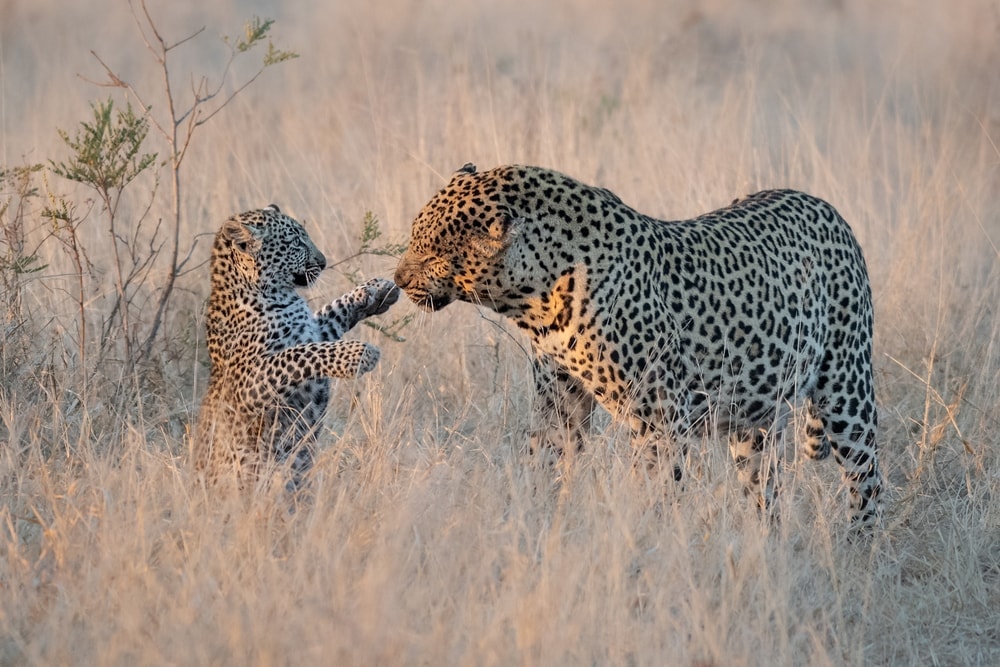
Although visually leopards and jaguars are quite similar, leopards are a distinct type of big cat that belongs to the species Panthera pardus. They feature relatively short legs, long bodies, and spotted coats that help them camouflage in a wide variety of habitats, from rainforests to mountain steppes.
Leopards are one of the most widely distributed of the big cats with populations found throughout sub-Saharan Africa, parts of the Arabian Peninsula, the Middle East, the Indian Subcontinent and south-central Asia, Indonesia, China, and the Himalaya.
There are eight recognized subspecies of leopard, which are as follows:
4.1 African Leopard (Panthera pardus pardus)
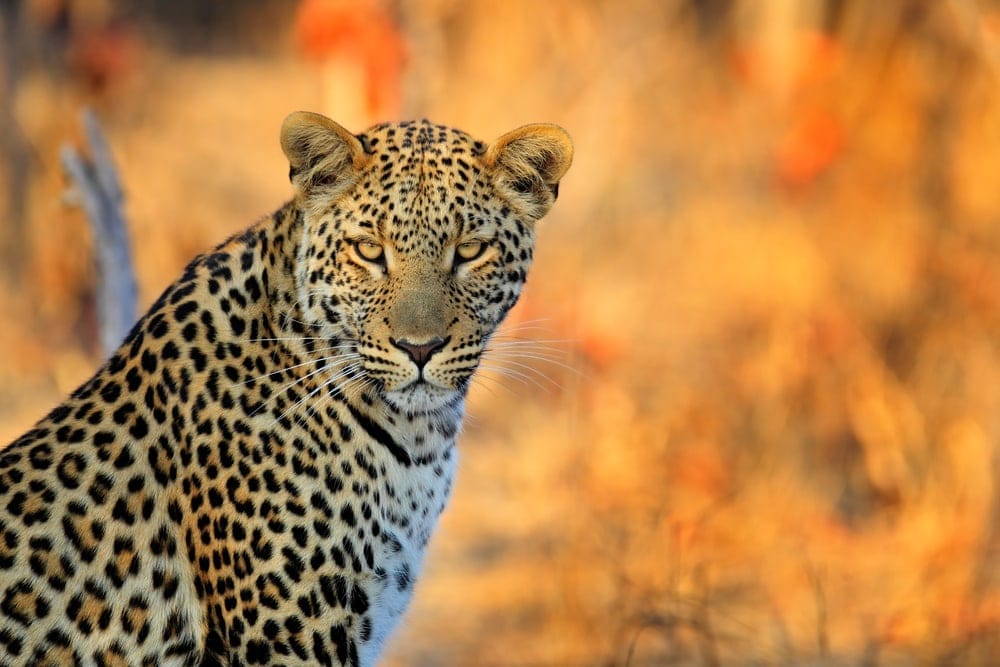
More commonly known as the African leopard, the Panthera pardus pardus subspecies is found throughout sub-Saharan Africa. This leopard subspecies has a large variation in its coloration, with some individuals having golden coats while others are much more of a pale yellow.
The African leopard is most commonly found throughout rainforests and savannas, however, it can survive in a range of environments, including mountainous terrain. These cats are expert hunters, which has allowed the species to flourish but has also led to conflict with humans looking to protect livestock.
4.2 Indian Leopard (Panthera pardus fusca)
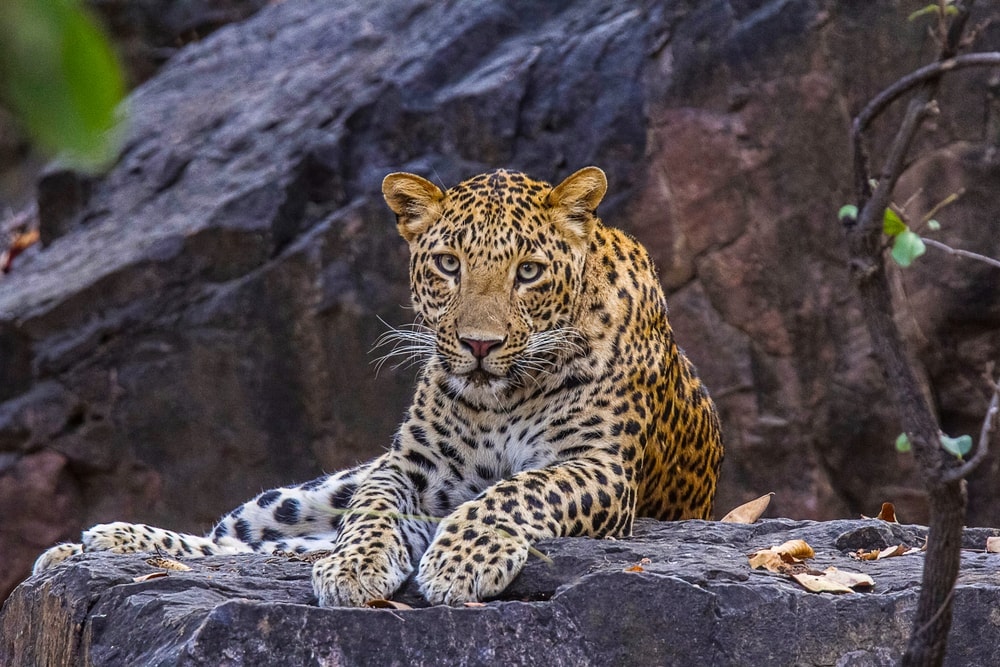
Also called the Indian leopard, the Panthera pardus fusca subspecies is found primarily on the Indian subcontinent. It’s believed that there are about 12,000 individuals remaining of this subspecies.
The Indian leopard can be found in India, Nepal, and Bhutan, as well as in parts of Pakistan. However, the subspecies has been known to travel into southern Tibet, and it once lived in parts of Bangladesh.
However, as much of the Indian leopard’s range overlaps with that of tigers, researchers have found that leopards are not common in areas with sizable tiger populations. Furthermore, the Indian leopard’s range also overlaps with that of the Asiatic lion (Panthera leo leo) and that of the snow leopard, though this overlap doesn’t seem to affect the leopard’s distribution.
4.3 Javan Leopard (Panthera pardus melas)
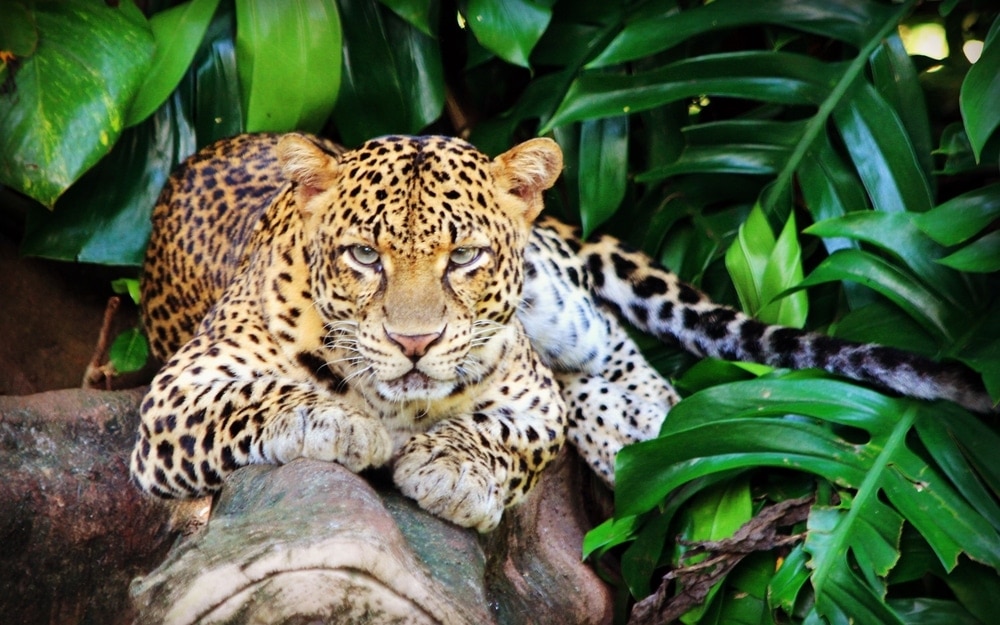
Panthera pardus melas, or the Javan leopard, is a critically endangered subspecies of leopard that’s found only on the island of Java in Indonesia. While the Javan leopard usually has a golden yellow coat like most other leopard subspecies, it also is known to have a high rate of melanism, which leads to a black fur coloration.
Due to the fact that the Javan leopard is found exclusively on the island of Java, it is at a high risk of going extinct in the near future. There are believed to be fewer than 250 individuals left on Java, and the subspecies’ population is declining, mostly as a result of habitat loss.
4.4 Arabian Leopard (Panthera pardus nimr)
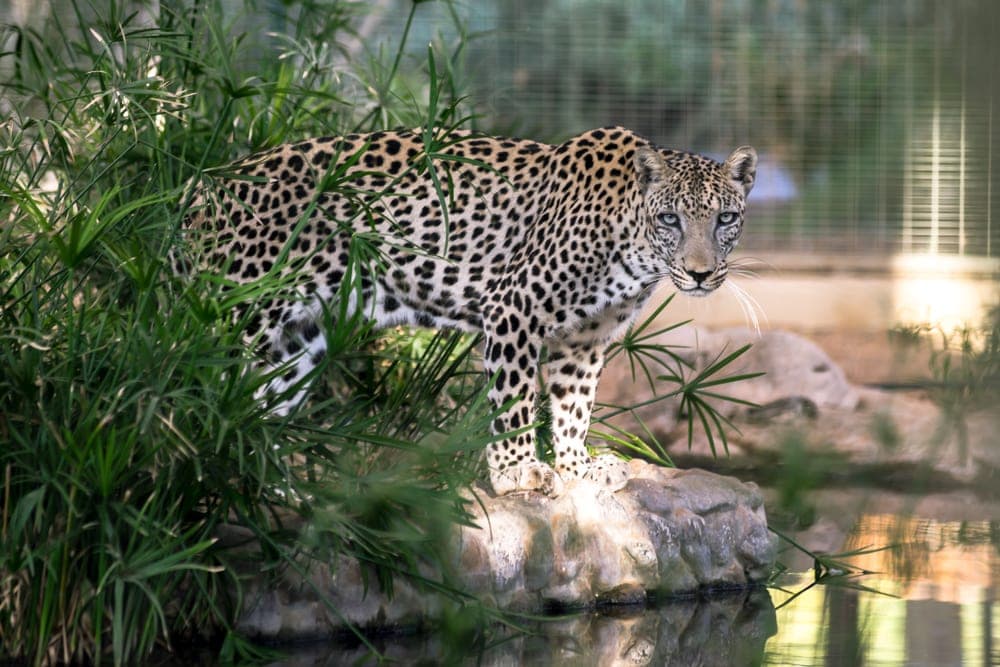
A highly isolated subspecies of leopard, the Panthera pardus nimr subspecies is found in parts of the Arabian Peninsula. Also called the Arabian leopard, these leopards were once found throughout the Arabian Peninsula, though they are now found only in distinct parts of Yemen, Oman, coastal Saudi Arabia, and Israel.
The Arabian leopard is the smallest of the leopards with an average weight of about 66 lbs (30 kg). That being said, it is still the largest cat in the Arabian Peninsula.
However, the Arabian leopard is listed as critically endangered as it’s believed that there are fewer than 200 individuals left in the wild, all of which live in populations of less than 50 individuals. The primary threat to the Arabian leopard’s survival is habitat fragmentation and hunting.
4.5 Persian Leopard (Panthera pardus tulliana)
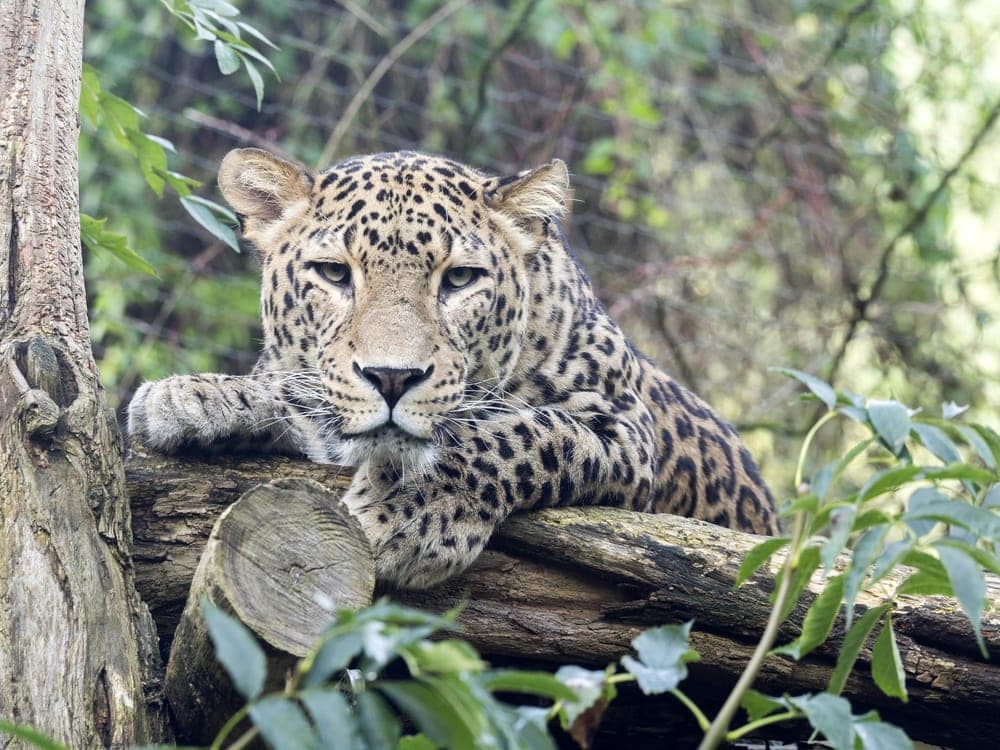
Frequently called the Persian leopard, the Caucasian leopard, or the Anatolian leopard, the subspecies Panthera pardus tulliana is a big cat that’s found in the Caucasus, Turkey, Iran, Afghanistan, Southern Russia, and Turkmenistan.
This leopard subspecies was once found widely throughout southwestern Eurasia, though it now lives only in isolated parts of its original range. It is known to have a slightly reddish tint to its fur and they are considered to be a mid-sized leopard when compared to other subspecies.
Nowadays, the Caucasian leopard lives primarily in temperate forests and subalpine meadows, though you can also find it in mountain steppes. The leopard is listed as endangered due to habitat loss and poaching, and there are now fewer than about 1,200 individuals left in the wild.
4.6 Amur Leopard (Panthera pardus orientalis)
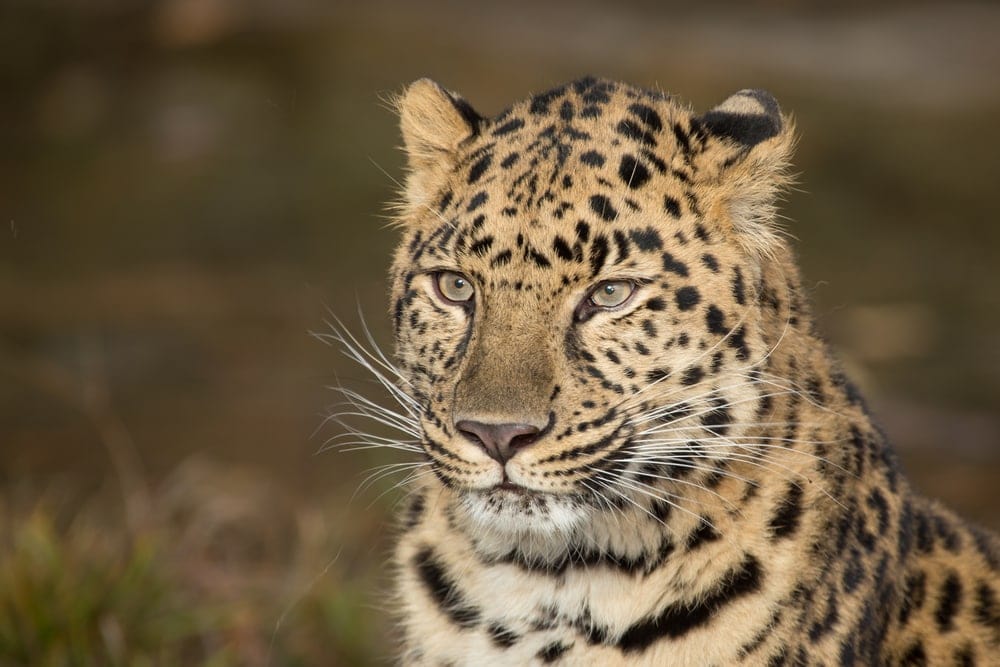
The Amur leopard, or Panthera pardus orientalis, is a leopard subspecies found in southeastern Russia and northern China. It is mostly found in the Primorsky Krai region of Russia, however, it’s believed that there are fewer than 100 individuals of this critically endangered subspecies remaining in the wild.
Unlike many of the other leopard subspecies, the Amur leopard does have some very distinct physical characteristics. For example, the Amur leopard has fur that’s paler in color, particularly during the winter months. It also tends to have thicker fur due to the colder environments that it inhabits.
Like many leopard subspecies, the Amur leopard is threatened by habitat loss and poaching. Furthermore, the Amur leopard competes with the tiger in some parts of its range, which can lead to a decrease in the subspecies’ population.
4.7 Indochinese Leopard (Panthera pardus delacouri)
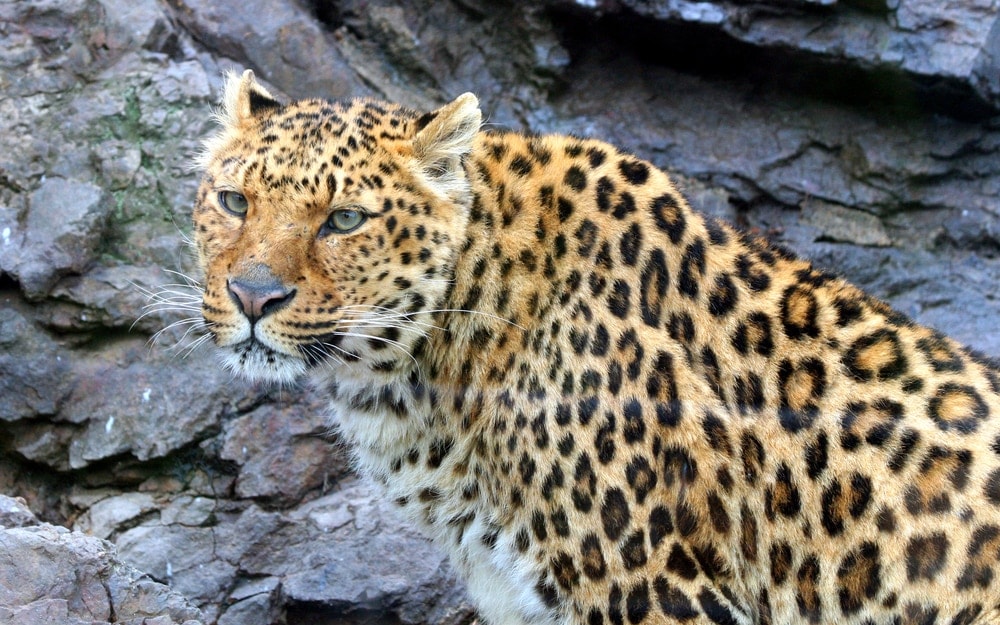
Panthera pardus delacouri, or the Indochinese leopard, is a critically endangered leopard subspecies found in Southeast Asia and parts of southern China.
Although the Indochinese leopard generally looks quite similar to other subspecies, it is known for its high rate of melanism, which leads the cats to Malaysia a black-colored fur coat. In fact, these black-colored leopards are quite common within this subspecies.
These days, a decent amount of the Indochinese leopard’s range is protected; however, habitat fragmentation and poaching have led to a drastic decrease in the leopard’s population. It is estimated that less than 2,500 individuals remain in the wild.
4.8 Sri Lankan Leopard (Panthera pardus kotiya)
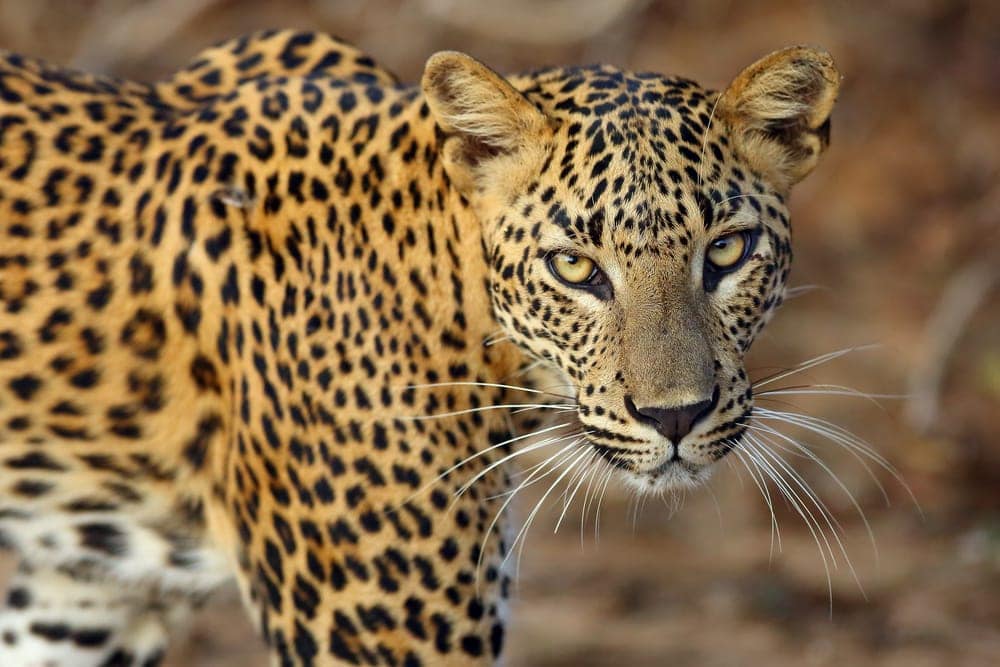
Last but not least, the Panthera pardus kotiya subspecies, which is most commonly called the Sri Lankan leopard, is a leopard found solely in Sri Lanka.
These leopards tend to have rusty yellow coasts with smaller, closely set spots. They tend to be fairly small and melanism is quite rare in the Sri Lankan leopard, so finding a black panther is not common in this region.
The Sri Lankan leopard used to be found throughout the island of Sri Lanka. However, deforestation for tea estates and urban development threatens the subspecies’ survival. There are currently fewer than about 950 individuals left in the wild and the subspecies is listed as endangered.
5. Snow Leopard (Panthera uncia)

One of the most elusive felines in the world, the snow leopard is a gorgeous and mysterious big cat that lives in the alpine and subalpine regions of south-central Asia. The snow leopard, like the jaguar, has no recognized subspecies, though researchers are in the process of studying two populations of the snow leopard to determine if there are, indeed, subspecies of the cat.
Snow leopards, as their name suggests, inhabit snowy, mountainous regions. They are particularly found in the Himalaya, Hindu Kush, Pamir Mountains, Kunlun Mountains, and other similar ranges in south-central Asia.
These cats often live above the treeline in alpine regions, particularly during summer months; however, camera traps have also caught them roaming around in the alpine during the snowy winter season.
Snow leopards can maintain home ranges of up to 104 square miles (270 square kilometers). They are skilled hunters that search out prey like marmots, Himalayan blue sheep, Himalayan tahr, markhor, and argali.
Since they live in snowy environments, snow leopards normally have white or off-white spotted fur that helps camouflage them in the winter. They also have very thick fur coats and rounded ears to minimize heat loss, as well as large paws to distribute their body weight when walking on snow.
Interestingly, snow leopards are the only member of the genus Panthera that can’t roar. However, they do make plenty of other noises, like meows, grunts, and even purrs.
As with nearly all other big cats, the snow leopard is considered to be a species of concern and it is currently listed as threatened with an estimated 10,000 individuals remaining in the wild. Habitat loss and human conflict are the main reasons behind the species’ decline, as is climate change and the habitat fragmentation that it brings.
6. Cheetah (Acinonyx jubatus)
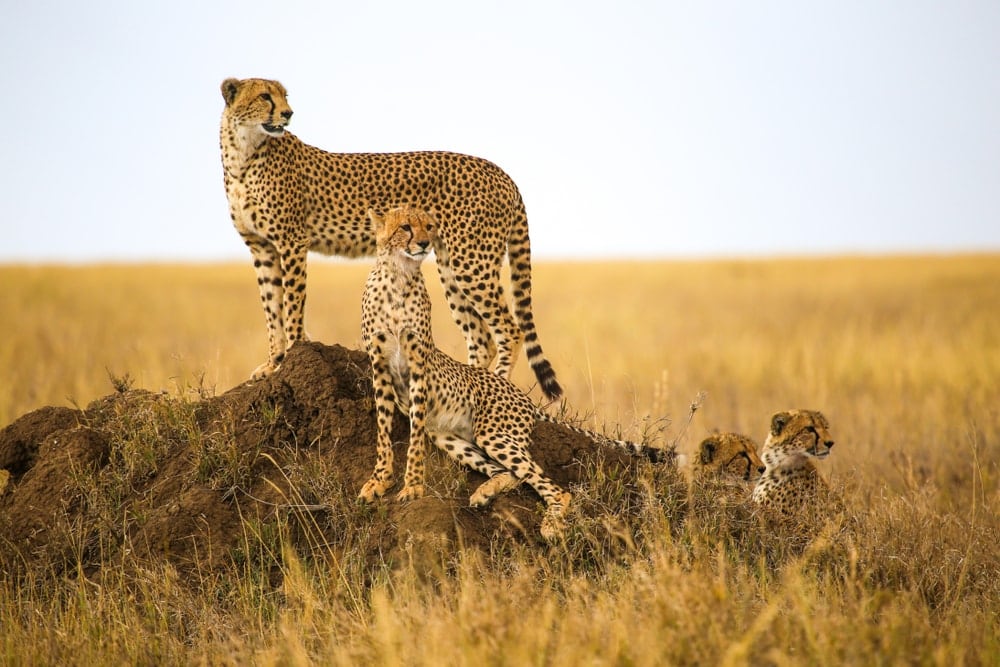
The world’s fastest land animal, the cheetah is a finely tuned hunting machine that can chase down prey in an incredibly efficient manner. Cheetahs, which are known as Acinonyx jubatus in the scientific community, are found primarily in Africa, but they are also populations in parts of Iran.
Unlike many of the other big cats, cheetahs are known for having very slender bodies, which are adapted for speed, not the brute force that we see in other large felines. They do have spots on their golden fur, however, which can sometimes lead to confusion with leopards when viewed from afar.
One of the key distinguishing features of cheetahs is that these cats are not able to fully retract their claws. This is believed to be an evolutionary advantage as their claws allow for better traction as they run while their tail can serve sort of like a rudder to steer them during a chase.
As a result of these evolutionary adaptations, cheetahs are able to run exceptionally fast, with one cheetah having been clocked at a blistering speed of 61 miles per hour (98 km/h). That being said, while they can sustain some fast speeds, cheetahs usually only run this fast for a few seconds.
There are currently four recognized subspecies of cheetahs, each of which is found in unique areas of the world. Here’s what you ought to know:
6.1 Southeast African Cheetah (Acinonyx jubatus jubatus)
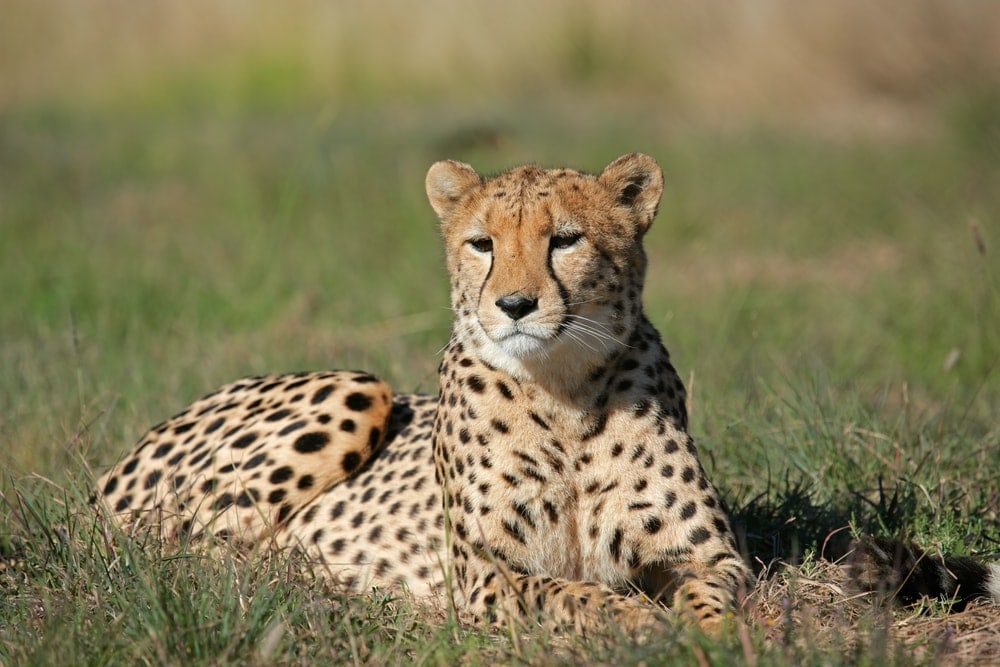
More commonly called the Southeast African cheetah, the Acinonyx jubatus jubatus is a cheetah subspecies that’s found in Southern and East Africa. Here, these cheetahs primarily live in savannas, grasslands, and scrub forests, where they can find plenty of herbivorous mammals, like antelopes to hunt.
This subspecies is the most populous subspecies in the world, even though it now lives on only a fraction of its historic range due to poaching and habitat loss. It’s currently believed that there are about 4,000 individuals remaining in the wild.
6.2 Acinonyx jubatus (Acinonyx jubatus venaticus)
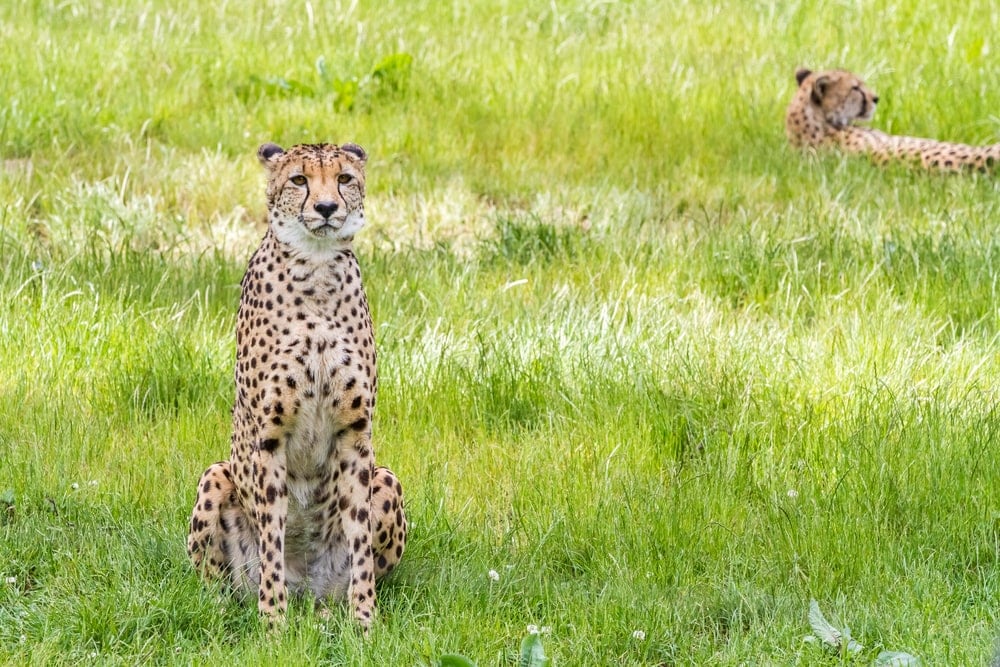
The only surviving cheetah subspecies in Asia, the Acinonyx jubatus venaticus, or Asiatic cheetah is a critically endangered feline that lives in the arid regions of east-central Iran. It was once found throughout the Caspian, Transcaucasus, and Arabian Peninsula regions, but it is now believed that there are fewer than 50 individuals remaining in the wild.
Physically, the Asiatic cheetah looks very similar to other cheetahs, however, their geographic isolation makes them very easy to identify. Due to the fact that they inhabit some very arid regions, they are most commonly spotted by humans near water sources. Otherwise, they are highly elusive, though it’s believed that their population may be growing.
6.3 Northeast African Cheetah (Acinonyx jubatus soemmeringii)
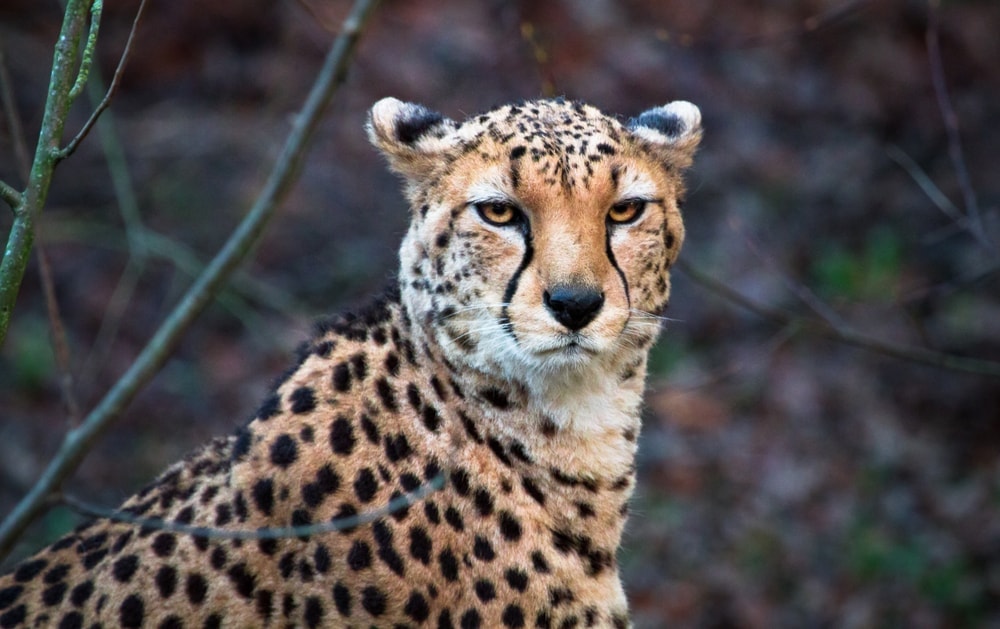
Acinonyx jubatus soemmeringii, or the Northeast African cheetah, is a cheetah subspecies that is found, as its name suggests, in the northeastern part of Africa. It is generally thought to live throughout Ethiopia and South Sudan, though its status in Djibouti, Eritrea, Sudan, and Somalia is not clear.
Sometimes called the Sudan cheetah, this subspecies is actually more closely related to the Southeast African cheetah subspecies than the nearby Northwest African cheetah subspecies. That’s because the Northeast African cheetah is fairly large with a tawny-colored coat that has plenty of pots.
Current population numbers of the Northeast African cheetah are hard to come by as only about 950 individuals live in protected areas. However, it’s believed that there are somewhere between 1,150 and 4,500 individuals left in the wild.
6.4 Northwest African Cheetah (Acinonyx jubatus hecki)
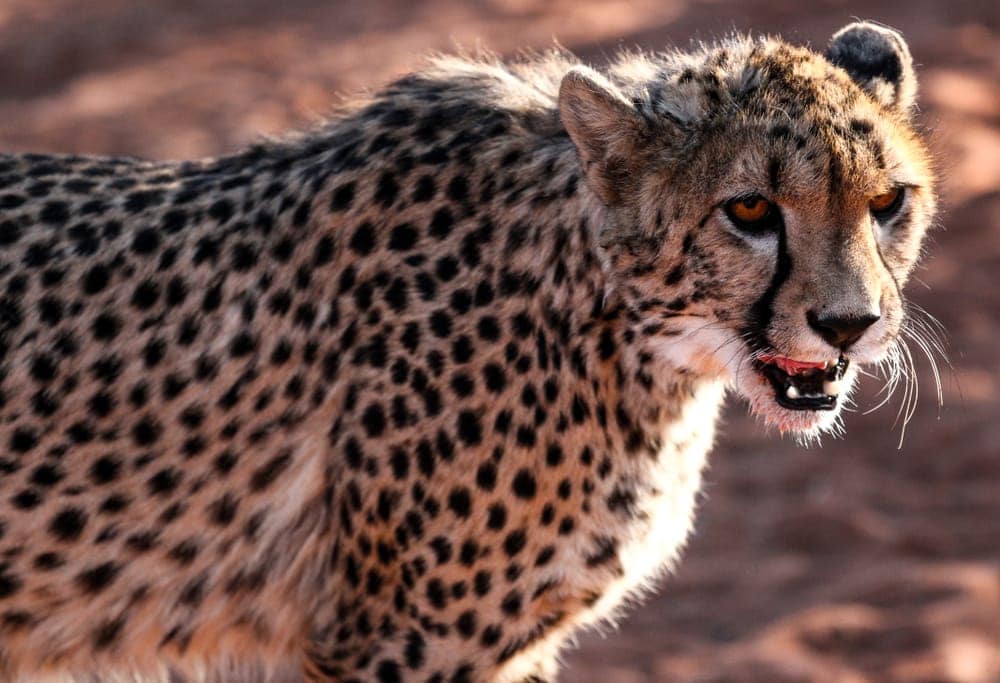
The last of the four cheetah subspecies, the Northwest African cheetah (Acinonyx jubatus hecki) is a cheetah that lives primarily in the Sahara Desert. It is one of the few African cheetah subspecies that has a very distinctive appearance, thanks to its lower concentration of spots on its coats and the near lack of spots on its face.
The Northwest African cheetah fees primarily on antelopes and smaller mammals that they hunt at night to avoid the heat of the Sahara. However, they are now listed as critically endangered and it’s believed that there are fewer than 250 adults left in the wild.
7. Cougar (Puma concolor)
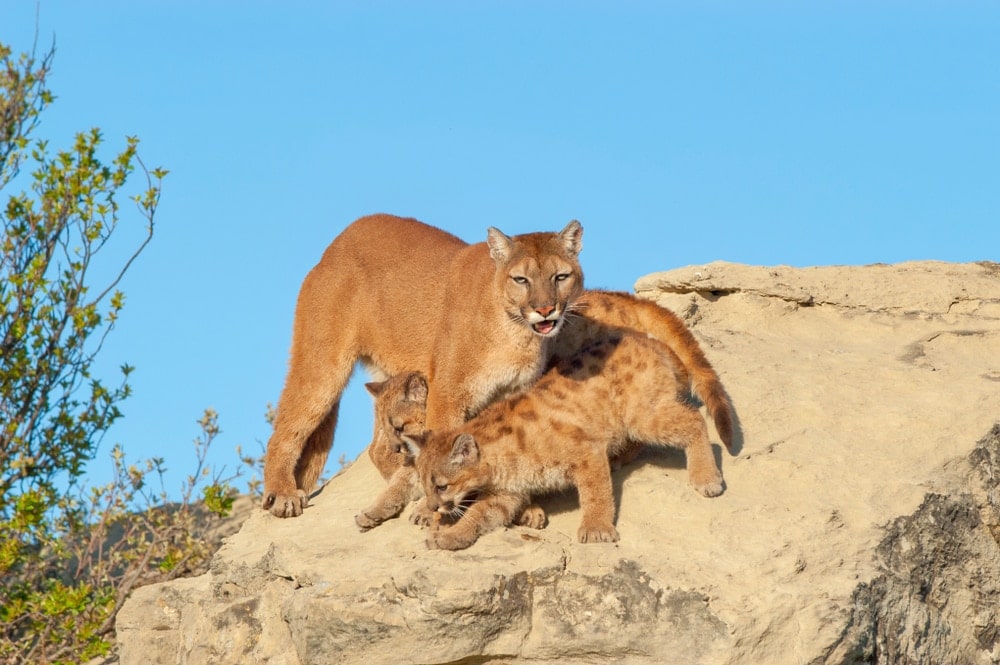
The only big cat to be found in North America, the cougar (Puma concolor) is a stunning feline that lives throughout the Americas, from the southernmost stretches of the Andes all the way to the northern edge of British Columbia in Canada.
One of the most elusive of the big cats, the cougar, which is also called a puma, mountain lion, panther, and catamount, is a skilled ambush predator that can live in a range of environments. They are primarily found in forested and jungle environments, but they also live in alpine regions.
Cougars were traditionally found throughout the Americas, including in the eastern United States and Canada. However, they have since been extirpated from much of their historical range. Nevertheless, there is a continuing debate over whether there are mountain lions in the eastern US and Canada with wildlife managers split as to whether they still exist in the area.
Much of the confusion over whether cougars still live in the eastern US and Canada (outside of Florida where there is a known cougar population), comes down to the fact that many people mistake bobcats for mountain lions. But, while genetic testing has confirmed some sightings in the eastern US and Canada, it is unclear if these are breeding populations.
Within the Americas, there are currently two recognized subspecies of mountain lion. This is what you need to know.
7.1 South American cougar (Puma concolor concolor)
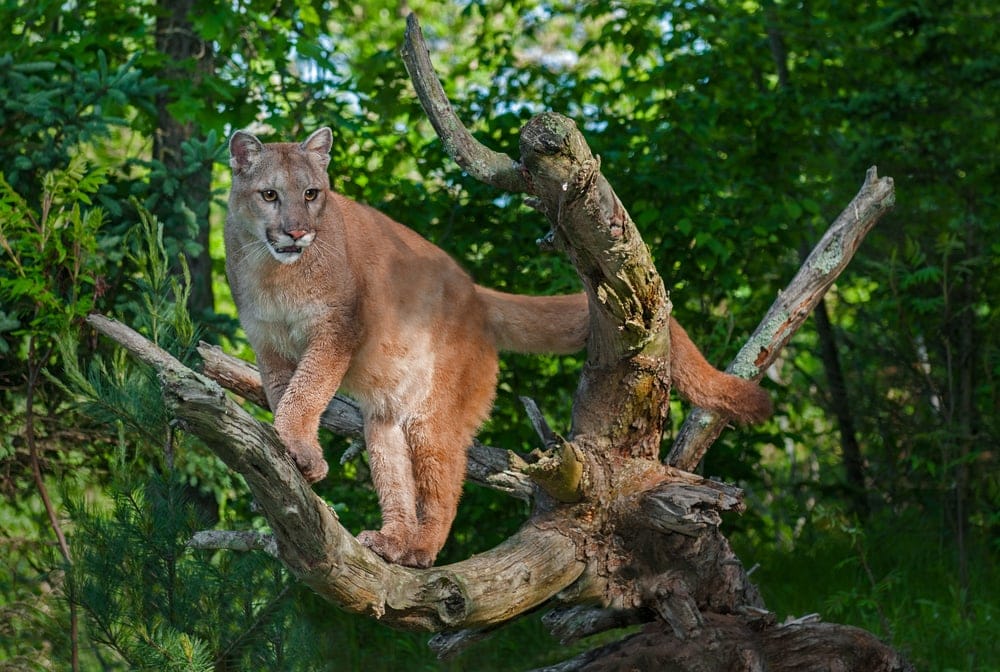
More commonly called the South American cougar, Puma concolor concolor is a mountain lion subspecies found as far north as Columbia and as far south as Chile and Argentina. This cougar subspecies does overlap with the jaguar in parts of its range, though you are more likely to find cougars outside of the rainforests and in more arid locales.
Interestingly, the South American cougar populations that live in the Andes are known to kill more prey than their northerly counterparts. This is because they often are harassed by the scavenging Andean condor after a kill, which leads them to abandon their food.
7.2 North American Cougar (Puma concolor couguar)
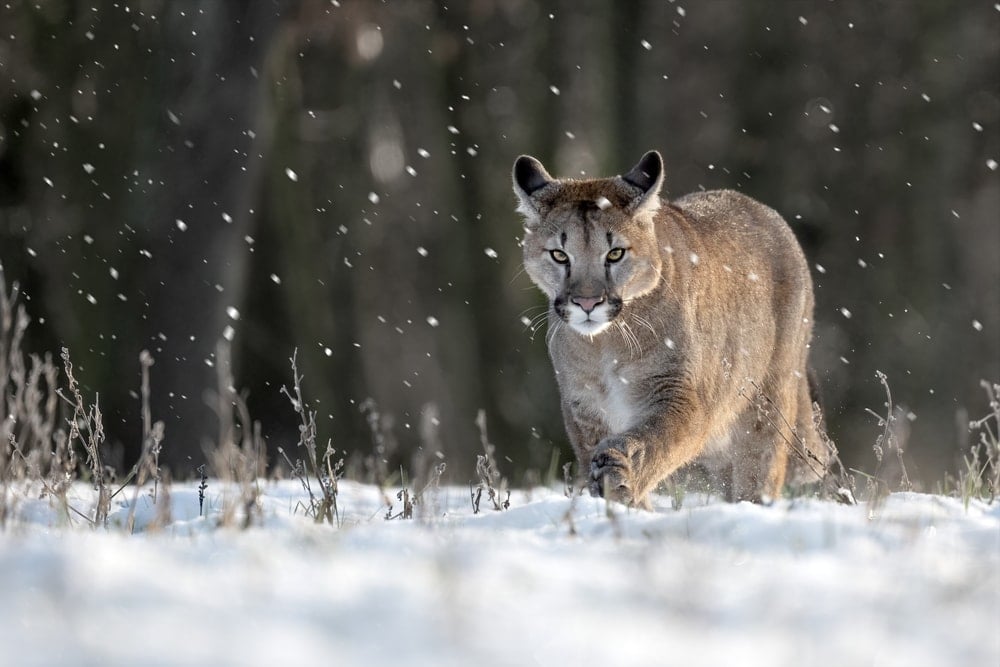
Also known as the North American cougar, the Puma concolor cougar subspecies is found primarily in the western part of North America.
This subspecies once existed throughout nearly all of the North American continent to the south of about 60º in latitude. Therefore, it also includes the now-extirpated Eastern cougar population, as well as the living and isolated Florida panther population. Interestingly, although they’ve been extirpated from much of their range, cougars are classified as a species of least concern.
Mountain lions in North America are decidedly elusive and many hikers will never see one during their travels. They often live in forested environments, but they are also found in some subalpine locales.
The 2 Types of (Almost) Big Cats
At this point, we’ve discussed the seven species that are generally included within the definition of “big cats.” However, some sources, including National Geographic, also include two other species as part of their definition of the types of big cats. So, for the love of all things feline, let’s discuss these two related species.
1. Clouded Leopard (Neofelis nebulosa)
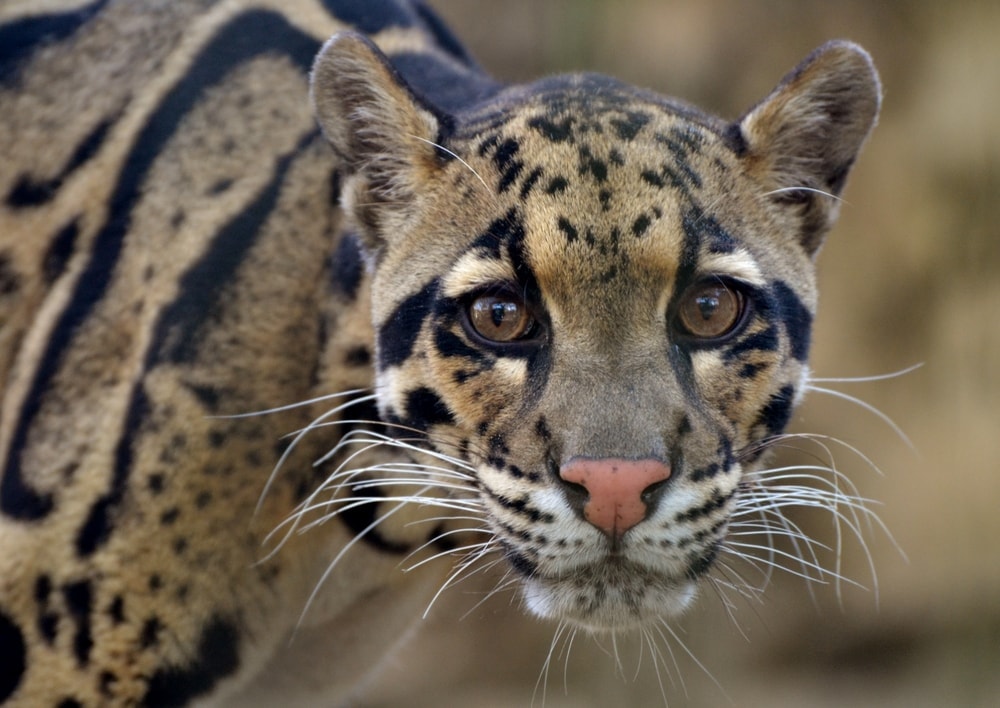
Despite its name, the clouded leopard (Neofelis nebulosa) is not actually closely related to the leopard, nor the snow leopard. Rather, it’s a member of a totally different genus (Neofelis), and it is substantially smaller in size with an average length of no more than about 43 inches (108 cm).
The clouded leopard is found throughout parts of south-central and southeastern Asia where it lives primarily in forested areas, such as in the foothills of the Himalaya. Visually, it is also quite distinct from the leopard as it has much larger spots that appear to be more like splotches of color than little rosettes.
Furthermore, the clouded leopard is not able to roar, though it can purr, which is another difference between it and the true leopard.
As with most big cats, the clouded leopard is considered to be threatened and the IUCN has it listed as vulnerable. Much of the species’ decline is due to poaching and habitat loss, but there are some captive breeding programs that seek to encourage the growth of the species.
2. Sunda Clouded Leopard (Neofelis diardi)
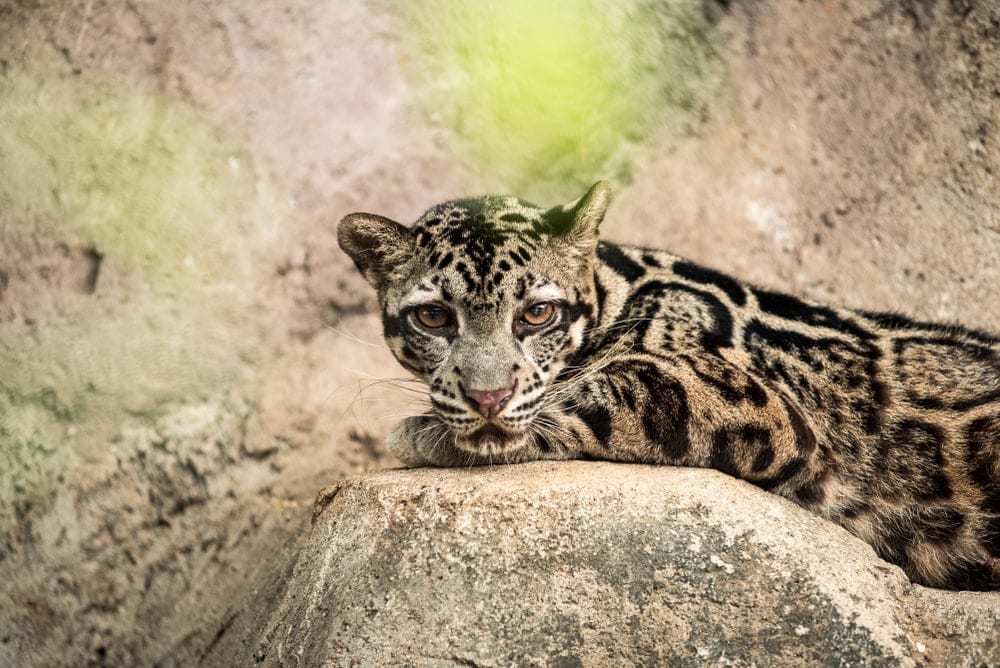
The Sunda clouded leopard (Neofelis diardi) is a distinct species of clouded leopard that’s found on the islands of Sumatra and Borneo. Sometimes called the Indonesian clouded leopard, this species is believed to have diverged from the clouded leopard about 2 million to 900,000 years ago.
Like the clouded leopard, the Sunda clouded leopard is much smaller than the widely recognized big cat species. It is actually quite small with a weight of no more than about 57 lbs (26 kg), or about the size of a mid-size domestic dog.
The Sunda clouded leopard is considered to be threatened, however, and it’s thought that there are fewer than 10,000 individuals left in the wild. Since these cats are arboreal, which means they spend a substantial amount of time in the trees, deforestation in Borneo and Sumatra has led to the species’ decline in recent years.
You may also like: 10 Different Types Of Habitats That Animals And Plants Call Home
How Are Big Cats Classified?
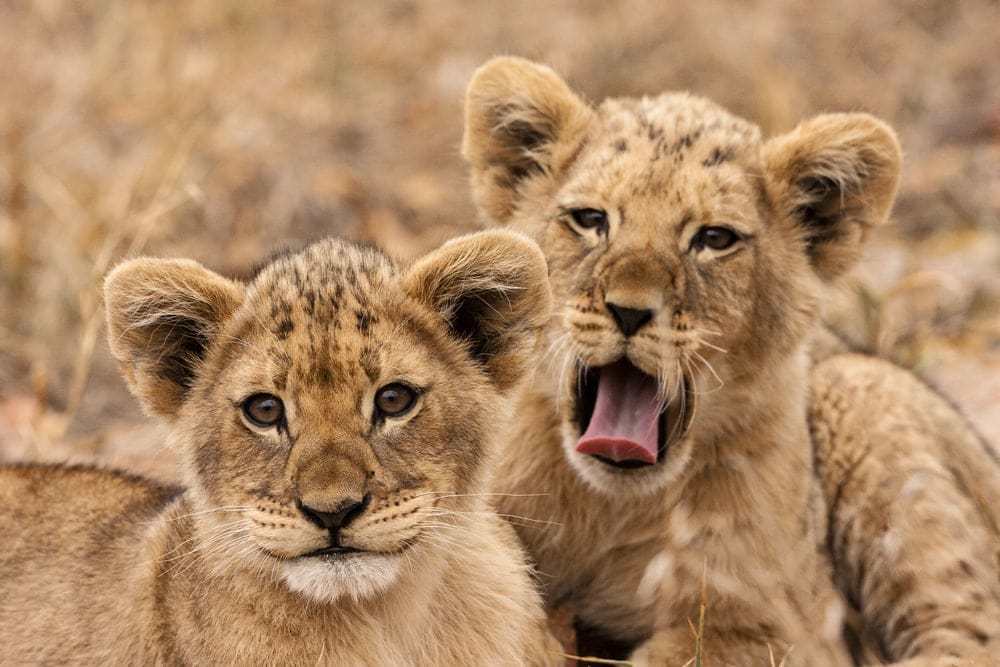
Since the phrase “big cat” isn’t a scientific term, but rather a colloquial one, describing the classification of these cats is fairly complicated.
However, as all big cats are, indeed cats, they are all members of the kingdom Animalia, the phylum Chordata, the class Mammalia, the order Carnivora, the suborder Feliformia, and the family Felidae, where you can find all of the cats.
Within the family Felidae, things get a bit complicated.
The majority of big cats are members of the genus Panthera, which includes five living species: lions, tigers, leopards, jaguars, and snow leopards. All of these cats were grouped together based on genetic analysis, however, the snow leopards are the only members of the genus Panthera that cannot roar.
Meanwhile, many people would include cheetahs and cougars as big cats, too, even though they aren’t in the genus Panthera. Rather, cheetahs are the only living member of the genus Acinonyx and cougars are the only living members of the genus Puma.
Finally, if you accept the expanded definition of “big cats,” which includes the clouded leopard and the Sunda clouded leopard, then the two members of the genus Neofelis would also be included as big cats. However, the inclusion of these two relatively small cats as “big cats” is highly contested.
You may also like: Learn What a Bite Force is and Meet the Animals with the Strongest Bite Force: Complete With Images, Facts, Descriptions, and More!
Big Cats FAQs
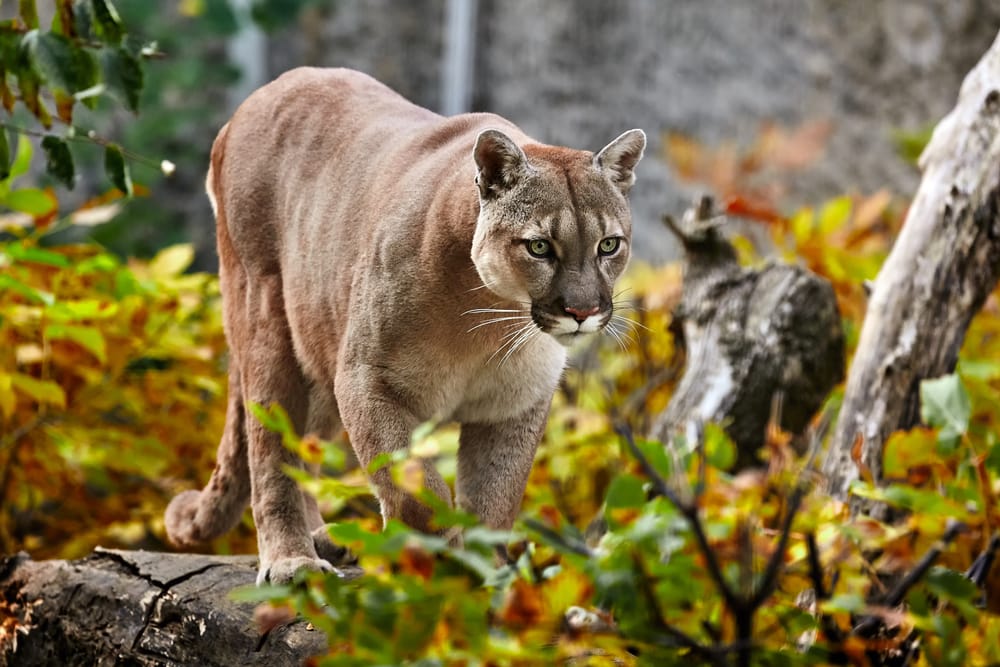
Here are our answers to some of your most commonly asked questions about big cats:
Is a lion a panther?
Lions and panthers are not the same things. Lions belong to the species Panthera leo, while the name “panther” generally refers to mountain lions or cougars, which are members of the species Puma concolor.
The confusion arises from the fact that lions are part of the genus Panthera while cougars do not. However, outside this taxonomic distinction, lions are not considered to be panthers—only mountain lions are.
Can big cats purr?
With the exception of the cougar, snow leopard, and cheetah, big cats can’t purr. This is because big cats have a tough piece of cartilage that extends up through the hyoid bones at the roof of the tongue that allows them to roar. As a result, these cats can’t vibrate their larynx like smaller cats, cheetahs, snow leopards, and cougars can, preventing them from purring.
Can big cats meow?
Generally speaking, the big cats that roar (e.g., lion, tiger, leopard, and jaguar) cannot meow. Meanwhile, the cougar, snow leopard, and cheetah can make meow-like sounds, just like your adorable housecat. However, the meows of these cats sometimes sound more like a scream than your kitten’s meow.
What’s the difference between a Florida panther and a cougar?
There is technically no difference between a Florida panther and a cougar as Florida panthers are members of the Puma concolor species, just like the other cougars. However, Florida panthers are a distinct population (or subspecies, depending on who you ask) of cougars that lives in southern Florida.
Is a black panther a jaguar or leopard?
Black panthers are a type of leopard and jaguar. They are technically a melanistic color variant of leopards or jaguars, which means that they have a much higher level of melanin pigment in their skin or fur than is normal for their species. So, they are not a species in their own right, but a coloration of either jaguars or leopards.










